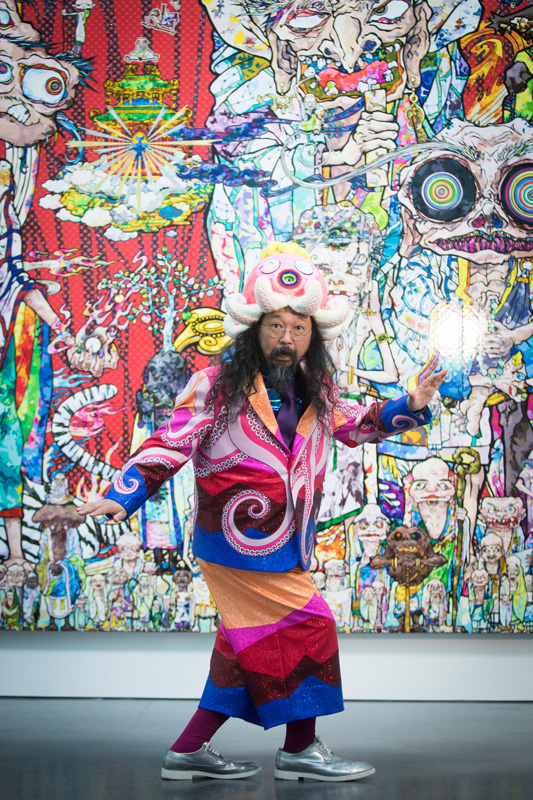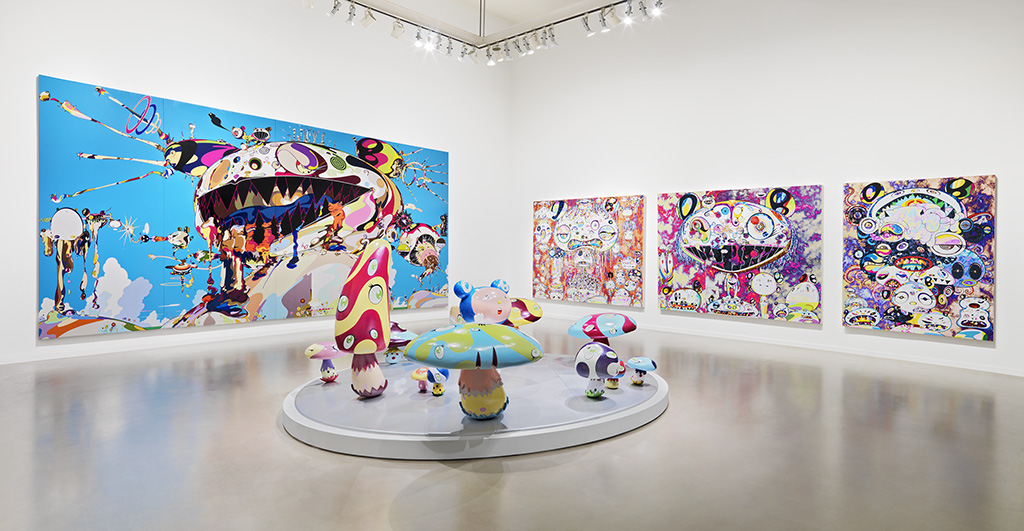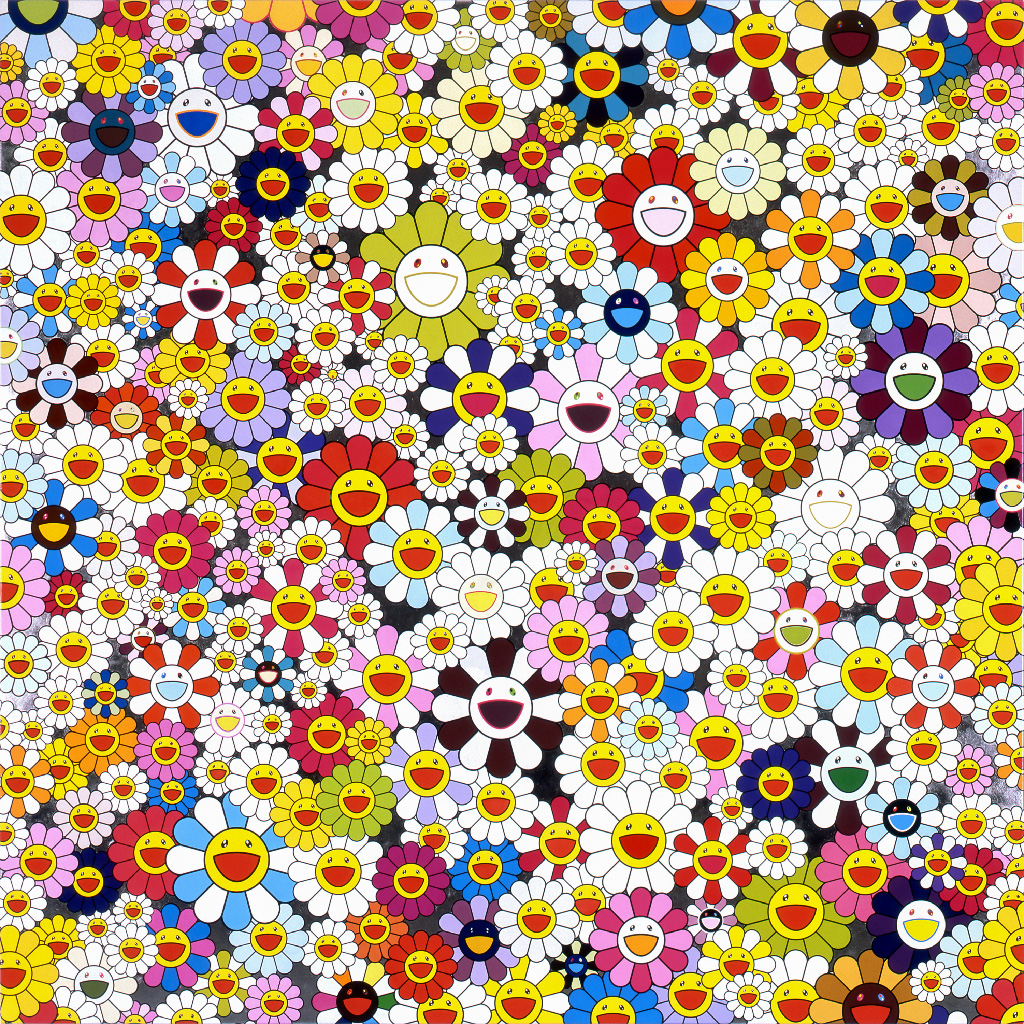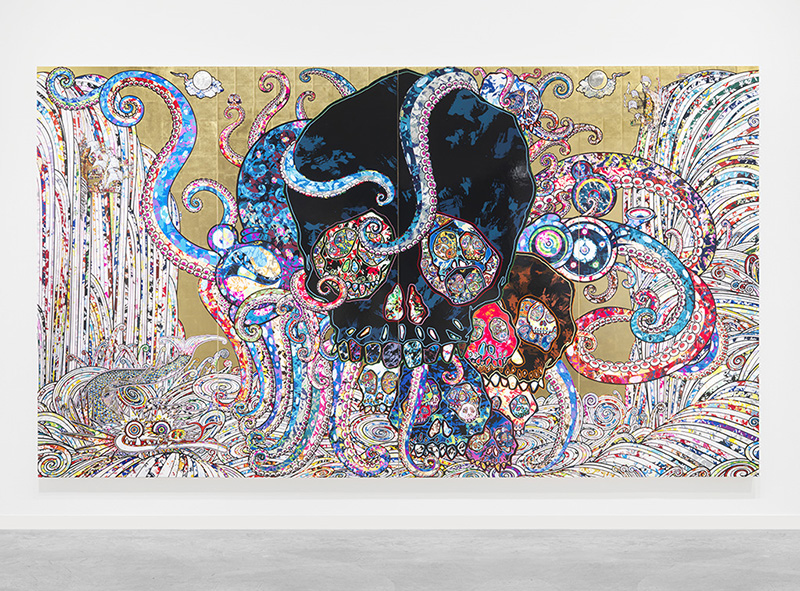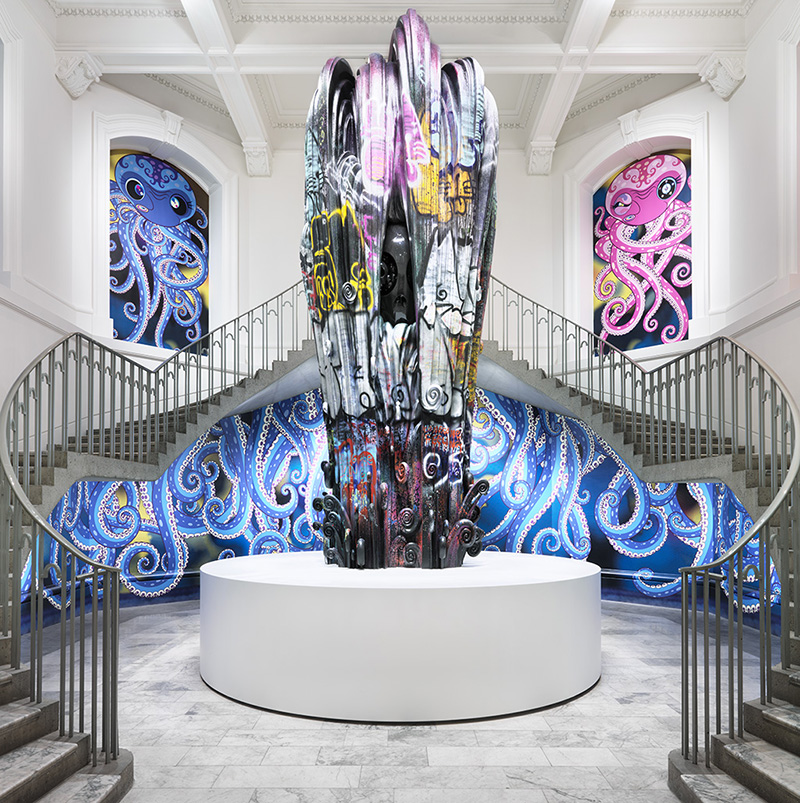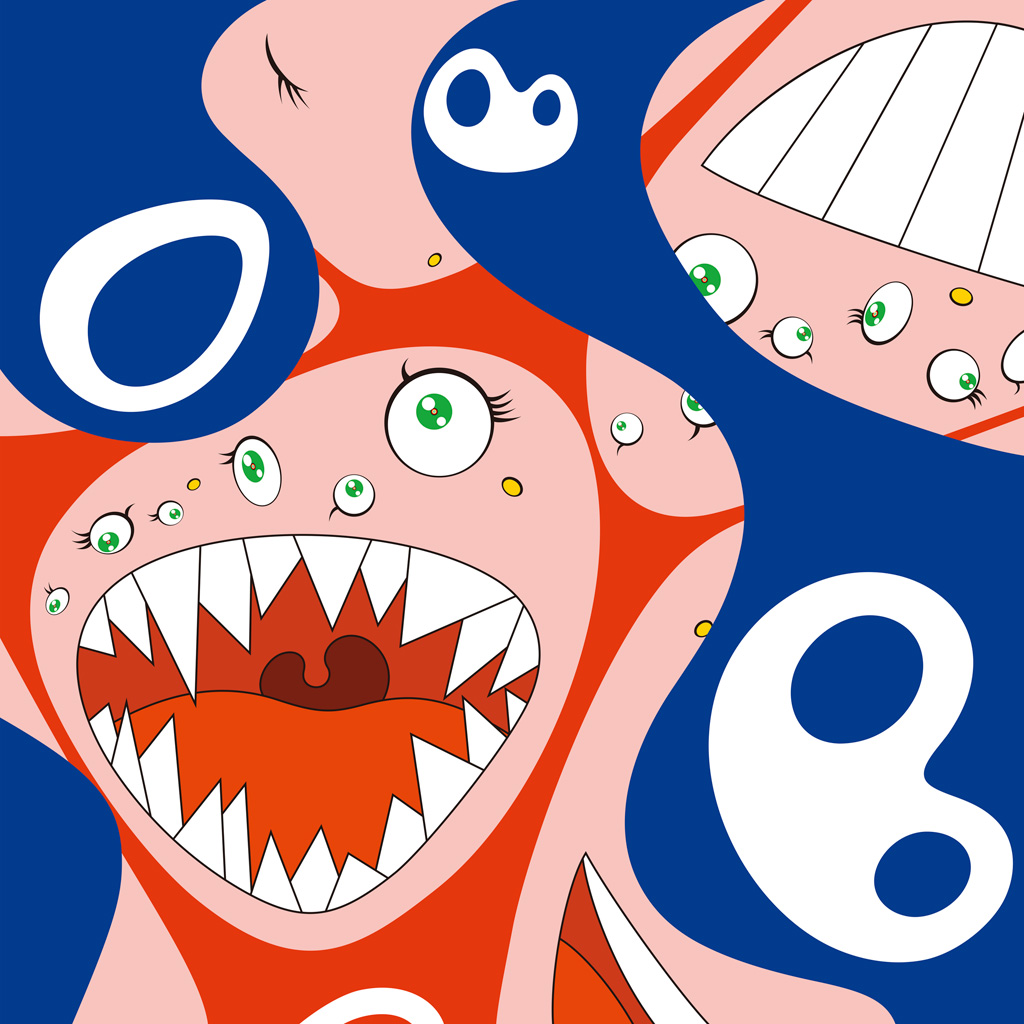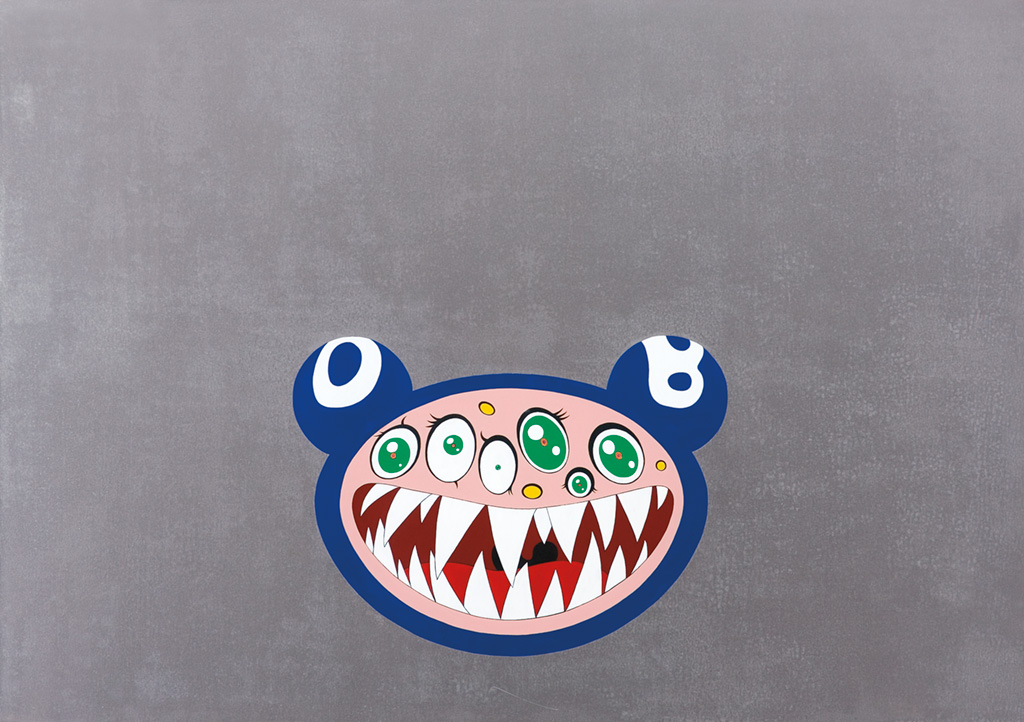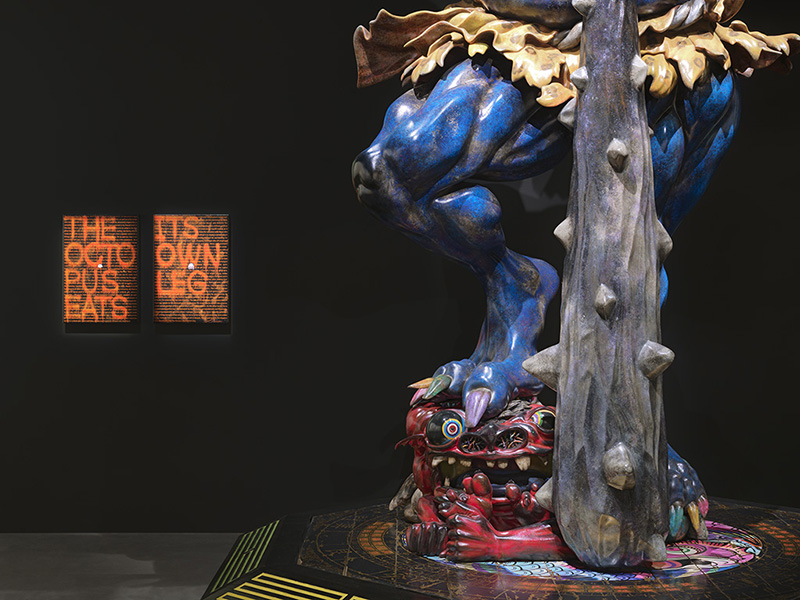In one of the exhibit rooms at “The Octopus Eats Its Own Leg,” the massive retrospective by Japanese artist Takashi Murakami at the Vancouver Art Gallery, the walls have been painted black. In stark contrast to the expansive white that covers the rest of the building, this moody space is hung with giant pieces that depict shiny collages of troll-like creatures. In the centre, two statues almost as high as the ceiling hover over visitors with their gremlin feet and sinister faces. Despite all this, staring at these pieces produces a sort of inexplicable happiness. There is somehow calm in the chaos.
Perhaps that is the appeal of Murakami’s work: being able to mask the cheerful with the menacing, and the ominous with the joyous. Viewing the world-famous artist’s pieces up-close is a mind trip in the best way—and a rare one, considering Vancouver is the only stop on Murakami’s three-city North American tour, making it the home to the artist’s first-ever major retrospective in Canada.
The show, featuring more than 55 pieces and spanning three decades, runs until May 6, 2018. At a preview prior to opening, gallery director Kathleen Bartels championed it as an “unprecedented perspective” on Murakami’s work, and it is hard to argue with that; from the subdued Picture of a Turtle ‘I Spin’ (1986), to 1997’s colourful and recognizable Klein’s Pot B, to the intriguing Monks Bearing the Light of Destiny from 2017, the breadth of pieces on display here is exciting and diverse. There are even two 2018 paintings, both currently untitled, that have some characters left only as outlines; these unfinished pieces add a human element to an otherwise very polished exhibit.
The name of the show, which was put on in partnership with the Museum of Contemporary Art Chicago, comes from a Japanese saying for when a situation is dire and we are forced to take extreme measures in order to survive. At the closed preview, Murakami explained (partly through a translator) that for him, the title was also a way to poke fun at himself for often using the same characters, themes, or inspirations in his pieces—for eating his own leg instead of looking elsewhere for a solution. There is indeed repetition throughout the body of work on display, but sometimes repetition is necessary. Like a collage effect on our brains, it all adds up to something stronger.
Read more from the Arts.

